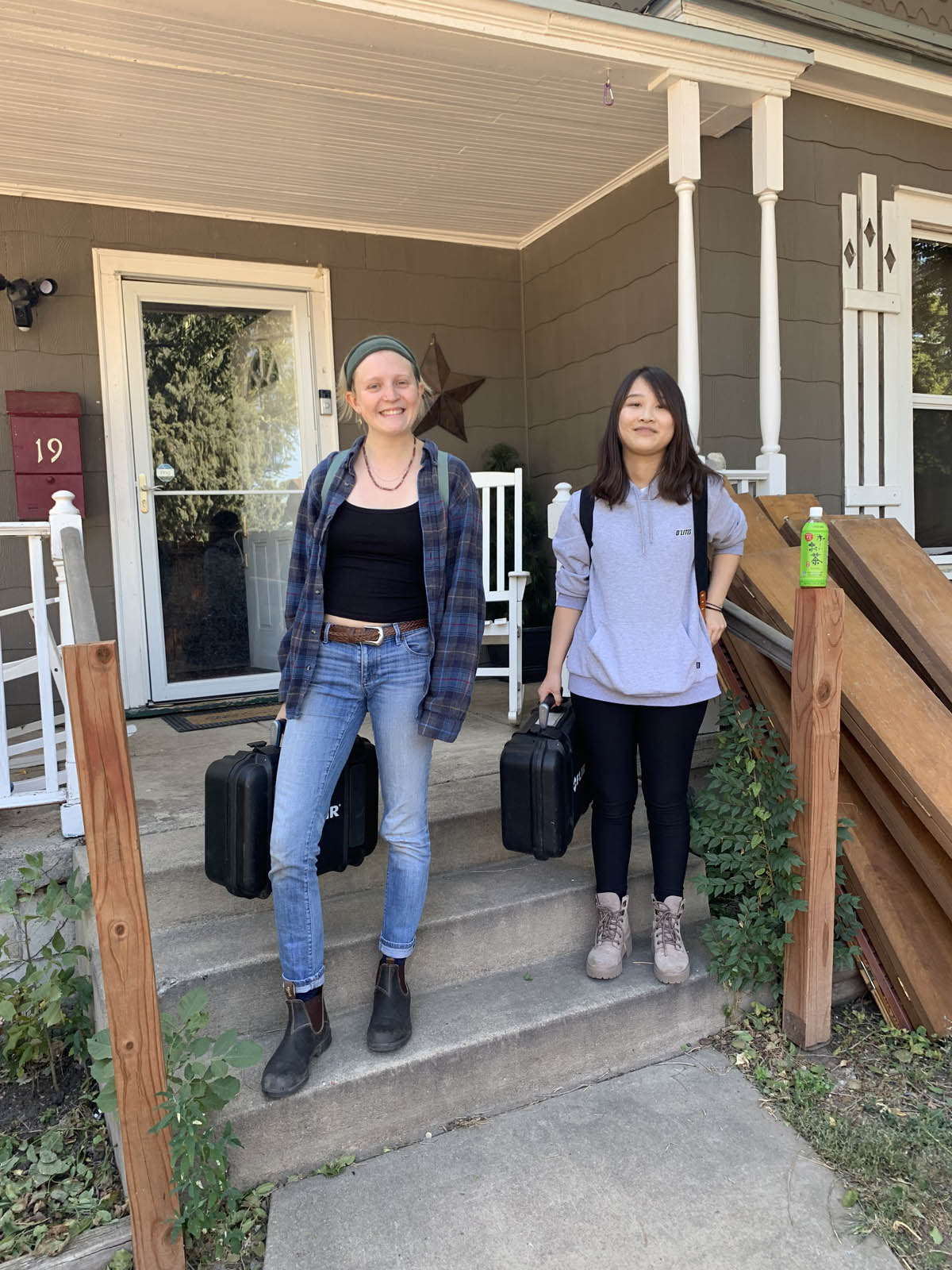Colorado College environmental science majors Frannie Nelson '21 and Tiantian Zhu '22 stood in a 1,100-square-foot home in southwest Colorado Springs, monitoring the results from a blower door, a machine used to measure the airtightness of a building and locate Infiltration points.
What they saw pleased them.
The energy efficiency retrofits recommended and implemented by students in a course titled Energy: Environmental Thermodynamics and Energetics resulted in a 23% decrease in the frequency of air changes per hour in the house, and Nelson and Zhu were delighted with the results.
Assistant Professor of Environmental Science Lynne Gratz, who has a knack for making the concepts taught in the class accessible to the layperson, explains that inefficient buildings leak air and thus have higher air changes per hour, requiring the furnace to work harder to pump heat into the house. The 23% decrease in the frequency of air changes indicates a significantly more efficient building.
The course, which typically is offered twice a year, combines physics- and chemistry-based concepts of thermodynamics to study energy generation, use, and conservation. "The course seeks to have the students understand energy and use it efficiently," says Gratz. The class partners with the Energy Resource Center to conduct a preliminary energy audit of a house, assess the results, and then plan and implement a retrofit of a home in Colorado Springs.
"I think the project just has multiple benefits - students get to apply what they are learning in the classroom in a practical, meaningful way; the ERC gains visibility and community partnership; the homeowner gets a free energy upgrade and a new awareness about their home's energy use; and slowly we make a positive impact on energy use in the Colorado Springs community," says Gratz.
Improvements performed by the students included adding bat insulation to the crawl space and blowing 56 bags of loose insulation into the attic, which together resulted in an 18.3% decrease in conductive heat losses. The students' sealing of gaps and cracks - door seals, caulking, outlet covers, etc. - reduced the convective heat loss that was measured with the blower door and celebrated by Nelson and Zhu.
Nelson, who notes that the applicable content and hands-on aspect of the class belies its "not super-inviting title," says the concepts she learned "will actually help me in real life. I got to do a lot of math and apply it to a real-life situation. It all makes sense; this is not something you just stash in your brain. I learned how energy flows in a house."
Zhu, who lives in an apartment when home in Beijing, also enjoyed the real-world application of physics and chemistry to everyday situations. "I did not imagine the energy transfers in houses; how it is connected to all things," she says. "We would do the calculations in class, and then see how they were relevant to real life. The classroom and working in the house were not disconnected."
The team from the Energy Resource Center also was impressed with the Colorado College students. "They get so into it," says Ken Hall, an ERC furnace supervisor and manager of ERC's Pay it Forward program. "It's so different from learning it in a book, when you physically do the work and see how difficult it is. And then you get to see the results."
This is the third house Gratz's class has worked on in the past year and a half, with Gratz noting it takes the entire three-and-a-half weeks of the block to assess, plan, and complete a retrofit.
The ERC technicians, their CEO, the homeowner, and interested CC faculty and staff are invited to attend a final presentation in which the students compare the baseline measurements with those taken at the end of the project and explain their work.
"It's really nice to bring everyone together at the end, invite the homeowner to campus, when at that point we've always gone to their house, and in some sense celebrate the accomplishments of the course," says Gratz. "The students get to practice their oral and written presentation skills through the project deliverables, and I think it gives them a real sense of ownership for the work they've done, while also applying the concepts developed throughout the course.
"I think the students and I all take something away from the course that applies to our own lives. I'm just really grateful I came into this project and benefitted from the work that professors like Sally Meyer [Chemistry] and Barbara Whitten [Physics; retired] did to build it, and I am excited to carry the work forward."








